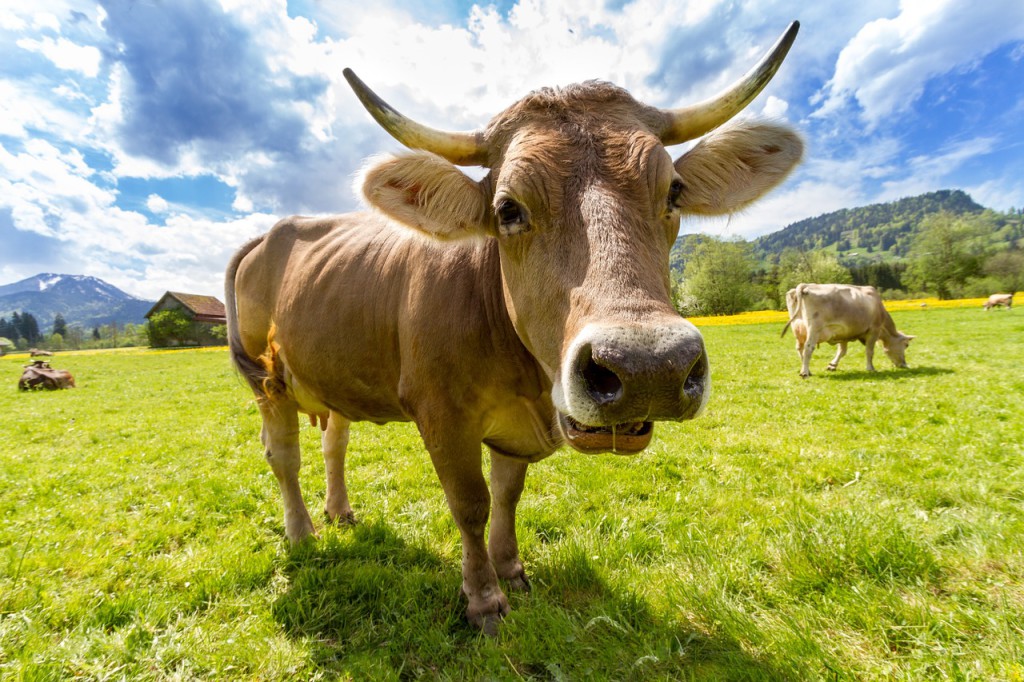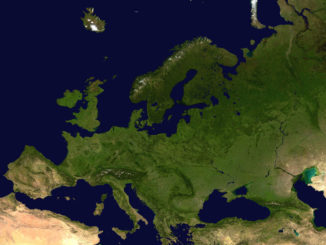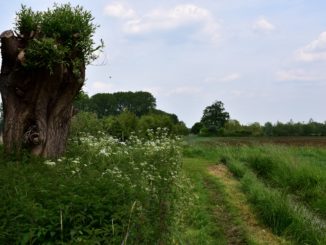ARC2020 exclusive: Part one two by André Pfimlin, translated from French by ARC2020’s Samuel Feret and Peter Crosskey. In part one, Andre outlines the milk crisis: part two, to be released tomorrow morning, suggests solutions. #MilkCrisis

“Since the long term market perspectives are good for animal products and since Europe has significant potential for growing milk production, we should produce more and export more”, said European Agriculture Commissioner Phil Hogan. “We must accelerate the modernisation and consolidation of livestock farmholdings to make them more productive and more competitive”, a Copa-Cogeca vice-president said recently (1).
In 2015, just like 2009, at the height of yet another milk crisis the line is the same out of Brussels, be it from the European Commission or Copa-Cogeca.
For our policymakers, dreaming of unlimited export trade for decades to come, the short-term volatility of world prices takes a back seat. It is down to the livestock farmers to anticipate market volatility and either build up reserves when prices are high or take out private insurance policies. So there will be cashflow problems for spendthrift livestock farmers: “…one shouldn’t talk of a crisis, nor question the market-driven milk policy, all the more so, since EUR 300/tonne is a very reasonable price for milk”, says Commissioner Hogan (1).
This statement points to a faulty diagnosis on three major points.
1. The Commission gambled on a very profitable world milk market
The world market for milk products is only based on 7% of the world’s total production, or 55 million tonnes of milk equivalent in 2013. The market is growing in the order of 1.5 to 2 million tonnes of milk equivalent/year. This market is primarily composed of standardized industrial products, such as very competitively-priced milk powders. Three exporters furnish more than 70% of the world market: New Zealand (NZ); the United States (US) and the European Union (EU). They have very different production methods and are more or less sensitive to climatic risks or the prices of cereals. A good or a bad year for one of these three makes world prices plunge or soar. So, in 2014 this threesome produced a milk surplus of 11 million tonnes of which more than 6 million tonnes came from the EU, against the backdrop of a market that is growing at a rate of less than 2 million tonnes a year.(2)
For NZ, which exports more than 90% of its production, milk is a priority for its balance of trade. Singlehandedly, NZ supplies a third of the world market in butter and milk powders, imposing its prices in these markets. Fonterra, the “multinational cooperative” has a quasi-monopoly of milk collection, processing and NZ exports, supplying 75% of Chinese milk powder imports.
Competition with NZ milk powder will, in this context, be very difficult for European producers. as we have said for years (3)
2. The Commission had not anticipated this new situation with overstocks and depressed prices
The 2015 milk crisis is primarily the logical outcome of the Commission’s deregulation programme, which the EU agreed, even if external events have heightened its impact.
Influenced by favorable milk prices in 2014, which was also a good year for forage crops and cereals, milk production went up strongly in NZ, the US and the EU, all at the same time. This provoked a major oversupply on the world market. But everyone was happy, particularly in Europe, because milk prices were still high.
So as early as the summer of 2014, the crisis was not only foreseeable but already at our doors (4 ). In August, the Russian embargo on dairy products closed a major EU market (2 million tonnes of milk equivalent / year). China had choked off its imports levels to better protect its internal milk production. Thus, despite these two major signals, after a short pause at the start of 2015, Europe continued to produce even more milk than during the record spring of 2014, and this in the face of a 20 to 30% drop in milk prices! A similar situation prevails in the US and NZ, but to a lesser degree. So the surplus stocks dragged down world prices to levels below those of 2009. (5 ) This depression also applies to other raw materials, notably oil, cereals and oilseeds because of the slowdown of global growth. (6)
3. The Commission has not proposed anything to correct this extreme volatility in the price of milk
The milk package and rebalancing the CAP in favour of Pillar 2 are “peacetime measures”. So the Commission has deliberately programmed both an internal and an external milk war, pitching the whole of European milk farmers against two champions of the world milk market, without checking the rules of the game applied by our competitors and without taking any new measures to secure the earnings of our milk producers!
At the end of 2014, contracts between producers and processors only covered 20% of European production. These were supposed to be the guiding light of the milk packet and yet contracts only dealt with deliveries and had no price guarantees. As for the intervention price, it has been dropped to EUR 215/tonne milk equivalent since 2007. This is well below production cost and has not been brought up to date, either. So the milk price is in free fall and there is no longer any safety net.
With today’s average milk price around EUR 300/tonne, more than one European milk producer out of two is working at a loss. That is to say that producer no longer earns any money to feed his family (7), but, worse, he is spending more money than he is making. The more he produces milk, the more he loses money. This is the case for the Danes, who lead Europe in yields per cow and by employee. However overloaded with debt, the Danes have trailed their competitors for 10 years. The Irish grassland systems, with comparable production costs to the NZ model are better placed to withstand what Phil Hogan calls a “reasonable” price. But since this milk is primarily converted into powder, this pulls the European milk price nearer to the world price and thus contributes to force out milk producers in less favoured milk regions of Europe.
But the Commission continues to turn a deaf ear to its critics when they talk of the extreme volatility of prices and the lack of any studies on the impact ending quotas would have on less favoured zones or mountain regions. Criticism from the Court of Accounts or the European Economic and Social Committee was swept aside in 2009-10, in the name of giving priority to the market; these criticisms were made again by the Committee of the Regions in 2013 and 2015 (6) and by the European Parliament (9) which went unanswered in turn.
André Pflimlin. 1. 9. 2015 afpflimlin@yahoo.fr
Auteur de : *Europe laitière, valoriser tous les territoires pour construire l’avenir ; Editions France Agricole 2010
Ancien ingénieur à l’Institut de l’Elevage. Expert Lait auprès du Comité des Régions à Bruxelles.
More
All ARC2020 articles on the milk crisis
Notes and references
1. Agra Presse of 31 8 2015
2. Le marché laitier mondial est un piège pour les éleveurs et un pari fatal pour l’UE. A Pflimlin 13. 07. 2015
3. Europe laitière , A Pflimlin, Editions France Agricole, 2010 ; 314 p.
4. Alerte rouge sur lEurope laitière? A. Pflimlin 16 09 2014 2 p.
5. Global Dairy Trade NZ is the reference point and sets world dairy product prices. The GDT works like a Dutch auction. Prices have been dropping steadily from March to early August 2015,
6. Crise laitière: mirages et réalités A. Pflimlin, 7. 8. 2015, 8p.
7. According to studies by the European Milk Board, the average cost of milk production in Germany and France is estimated at EUR 400/tonne for both countries, including paid family work but dairy subsidies removed. The Institut de lElevage puts the break-even point for production costs, not counting family work, at EUR 300/tonne in FR and DE; EUR 390 in DK and EUR 240 in IE ( C Perrot, journée CEREL 25 6 2015)
8. Future of the milk sector, Opinion of the Committee of the Regions, René Souchon, 16 04 2015.
9. Report on the milk package, J. Nicholson, European Parliament, 7 07 2015






1 Trackback / Pingback
Comments are closed.